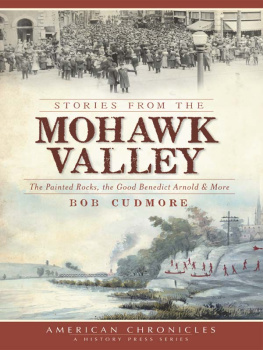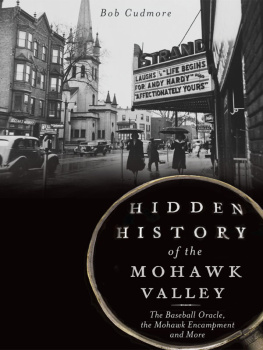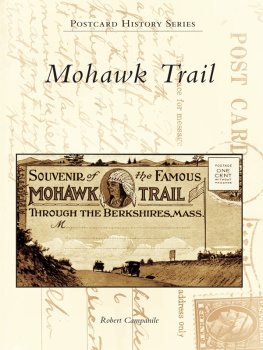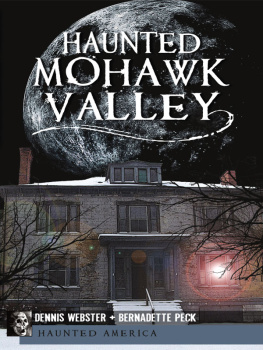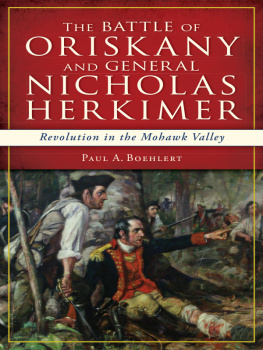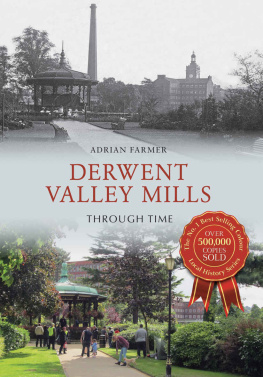

Published by The History Press
Charleston, SC 29403
www.historypress.net
Copyright 2011 by Bob Cudmore
All rights reserved
Front cover, top: World War I bond drive in downtown Amsterdam. Montgomery County Department of History and Archives. Bottom: Rufus Griders depiction of the Painted Rocks in Amsterdam, painted in 1887. New York State Archives.
First published 2011
e-book edition 2012
ISBN 978.1.61423.558.3
Library of Congress Cataloging-in-Publication Data
Cudmore, Bob, 1945
Stories from the Mohawk Valley : the Painted Rocks, the good Benedict Arnold and more / Bob Cudmore.
p. cm.
Includes bibliographical references.
print edition ISBN 978-1-60949-058-4
1. Mohawk River Valley (N.Y.)--History--Anecdotes. 2. Mohawk River Valley (N.Y.)--History, Local--Anecdotes. 3. Mohawk River Valley (N.Y.)--Biography--Anecdotes. I. Title.
F127.M55C84 2011
974.76--dc23
2011026792
Notice: The information in this book is true and complete to the best of our knowledge. It is offered without guarantee on the part of the author or The History Press. The author and The History Press disclaim all liability in connection with the use of this book.
All rights reserved. No part of this book may be reproduced or transmitted in any form whatsoever without prior written permission from the publisher except in the case of brief quotations embodied in critical articles and reviews.
To Audrey Sears, for her love and her love of stories
CONTENTS
Foreword
THE VOICE OF THE
MOHAWK VALLEY
Kirk Douglas may be Amsterdams favorite son, but Bob Cudmore is probably its most generally admired.
There was always enough Amsterdam twang in Kirk Douglass voice to make me wonder if I should claim that Spartacus or Vincent van Gogh were Amsterdamians, but Bob Cudmores voice is the one most people think of as the Voice of the Mohawk Valley. Whether it is the daily radio programs or the weekly newspaper columns, people hereabouts think that if Bob talked about it, its not only true but its also important.
Theyre right, and its more to do with the way Bob tells them than that they love being told about themselves. Personally, as a local historian, I have been grateful to him (and sometimes a little jealous) for getting these stories on the air and into print. Ive told Bob that hes done as much to chronicle the Lower Mohawk Valley as many of its most prominent historians. He wont have any of that; hes just telling its stories.
But for other readers, its not just his devotion to the content but also the humanity that underlies it. He gets what these stories really meanthat keeps readers coming back for more, and not just the hometown fans.
Ive wondered about this nonresident interest in his articles on the local area for a while, so recently I sat down to talk about this with one of the foremost experts on the region: Bob Cudmore. We agreed that despite many changes, Amsterdam remains a very special place. Close to everythingyet from any direction, you still have to drive through the woods to see it arise from the valley. Its a true microcosm, and on that small stage plays out love and hate, triumph and tragedy, violence and compassion, pettiness and greatnessall the larger for their tighter focus.
And thats when I realized why I had been reading his articles long before I moved here. Bobs stories capture universal qualities, and because they do, anyone can see something of his or her own hometown experiences in them.
And there is something else special about Amsterdam, which we didnt discuss that day. I now live less than a mile in either direction from the two respective homes where Bob Cudmore and Kirk Douglas grew up. As I move about the same streets, I can sense the ebb and flowthe noisy but fascinating parade of many different people interacting in one small area as they build new lives for themselvesthat these two must have also felt only a generation or so apart. I would never compare my skills to theirs, but I think I can understand what underlies and informs their common desire to tell important stories, and tell them well, though in very different ways. Amsterdam inspires great storytellers.
Many of the stories in this book are expanded from Bobs Daily Gazette column. Its the first thing I read each Saturday over my morning coffee, scissors and paste at the ready to add the information to the citys historical files. Ive acquired so many clippings that sometimes Ive wished there were some way to suspend Bob over the file cabinet and simply shake the stories out of him directly into the proper folders.
But now I may not have to.
After youve enjoyed these stories, tell your friends and family or give them a copy as a gift; if enough copies sell, then maybe Bob will have to do a second and third volume. And then I can put up the scissors, clean the paste off my coffee cup and just enjoy them like everyone else, resident or not.
R.H. von Hasseln
City Historian
Amsterdam, New York
July 2011
PREFACE AND
ACKNOWLEDGEMENTS
Have you heard about the Painted Rocks on the Mohawk River? Did you know that the 115th Civil War regiment raised in Fonda spent part of the war in Union custody? What do you make of Amsterdams Benjamin Paul Blood, who got a psychedelic circle going among early twentieth-century philosophers? There are stories everywhere in the Mohawk Valley.
Polish leader Michael Wytrwal loved welfare peanut butter. The aptly named Queen Libby stopped a train in Fonda. When Ralph Camacho came to Amsterdam from Puerto Rico, a man could lose one job at night and have a new one the next morning.
A good Benedict Arnold is buried in one of our cemeteries. George Washington could have used the privy at Old Fort Johnsonand the restored facility is still there. Amsterdam produced two Kentucky Derby winners.
The Amsterdam area, where many of these stories take place, is set apart from the urban sprawl of Albany, Schenectady and Troy. Amsterdams main industry for many years was carpet makingquite an artistic product.
We are feisty and colorfulgood company for the most part, if more than a little nostalgic for the old days. Its no accident that bestselling novelist Richard Russo came from our neck of the woods. Or that Amsterdams best-known former resident became an actor: Kirk Douglas.
As local native Mike Van Allen put it on Facebook, I think one of the best things about growing up in Amsterdam was that it prepared you for life outside of Amsterdam. As kids, I believe we werent sheltered. We saw bookies. We knew about guys selling stuff out of their trunks. We had seen great parades. We had friends of every race, religion and ethnic background.
Many tales are told in this volume, and I hope you enjoy them. Many stories have been left out, giving rise to the idea that this volume may have a sequel.
And do me a favordont pass the book around. Recommend it, by all means. But encourage your relatives and friends to buy their own copies. We have printed enough to go around. If you see me, I have a few in my trunk.
ACKNOWLEDGEMENTS
Audrey Sears provided immeasurable help as this book was being written, posing many questions that hadnt occurred to me. Thanks to Irving Dean, of the Daily Gazette, who has edited my history columns. Gerald B. Snyder was the go-to photo guy. Amsterdam city historian Robert von Hasseln was most helpful, as were Montgomery County historian Kelly Farquhar, Fulton County historian Peter Betz, former Montgomery County historian Jacqueline Murphy and Ann Peconie of the Walter Elwood Museum. The late
Next page
